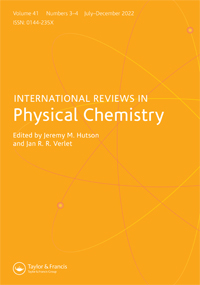Fundamentals of ion mobility in the free molecular regime. Interlacing the past, present and future of ion mobility calculations
IF 2.5
2区 化学
Q3 CHEMISTRY, PHYSICAL
引用次数: 12
Abstract
While existing ion mobility calculators are capable of feats as impressive as calculating collision cross sections (CCS) within a few per cent and within a very reasonable time, the simplifications assumed in their estimations precludes them from being more precise, potentially overreaching with respect to the interpretation of existing calculations. With ion mobility instrumentation progressively reaching resolutions of several hundreds to thousands (accuracy in the range of ∼0.1%), a more accurate theoretical description of gas-phase ion mobility becomes necessary to correctly interpret experimental state-of-the-art separations. This manuscript entails an effort to consolidate the most relevant theoretical work pertaining to ion mobility within the ‘free molecular’ regime, describing in detail the rationale for approximations up to the two-temperature theory, using both a momentum transfer approach as well as the solution to the moments of the Boltzmann equation for the ion. With knowledge of the existing deficiencies in the numerical methods, the manuscript provides a series of necessary additions in order to better simulate some of the separations observed experimentally due to second-order effects, namely, high field effects, dipole alignment, angular velocities and moments of inertia, potential interactions and inelastic collisions among others.自由分子状态下离子迁移的基本原理。交错过去,现在和未来的离子迁移率计算
虽然现有的离子迁移率计算器能够在合理的时间内计算出百分之几的碰撞横截面(CCS),但它们的估计中假设的简化使它们无法更精确,可能会对现有计算的解释产生过度的影响。随着离子迁移率仪器逐渐达到几百到几千的分辨率(精度在~ 0.1%的范围内),气相离子迁移率的更准确的理论描述对于正确解释实验中最先进的分离是必要的。这份手稿需要努力巩固最相关的理论工作有关“自由分子”制度下的离子迁移率,详细描述了近似的基本原理到双温度理论,使用动量转移方法以及解决离子的玻尔兹曼方程的时刻。由于认识到数值方法存在的不足,本文提供了一系列必要的补充,以便更好地模拟由于二阶效应,即高场效应,偶极子排列,角速度和转动惯量,潜在相互作用和非弹性碰撞等实验观察到的一些分离。
本文章由计算机程序翻译,如有差异,请以英文原文为准。
求助全文
约1分钟内获得全文
求助全文
来源期刊
CiteScore
14.20
自引率
1.60%
发文量
5
审稿时长
1 months
期刊介绍:
International Reviews in Physical Chemistry publishes review articles describing frontier research areas in physical chemistry. Internationally renowned scientists describe their own research in the wider context of the field. The articles are of interest not only to specialists but also to those wishing to read general and authoritative accounts of recent developments in physical chemistry, chemical physics and theoretical chemistry. The journal appeals to research workers, lecturers and research students alike.

 求助内容:
求助内容: 应助结果提醒方式:
应助结果提醒方式:


